The shift from “brick ‘n’ mortar” teaching to remote learning design is about more than posting lessons and assignments to a digital platform! Educators are working hard to recreate the learning ecosystem that exists in their classrooms and schools in a virtual way, because learning isn’t only about the lessons!
Shifting paradigms is always a process! You may not realize it, but your brain is going to go through a series of “developmental” shifts as you rethink “brick ‘n’ mortar” instruction to develop a purposeful and powerful remote learning environment. We’ve captured this in the image here:
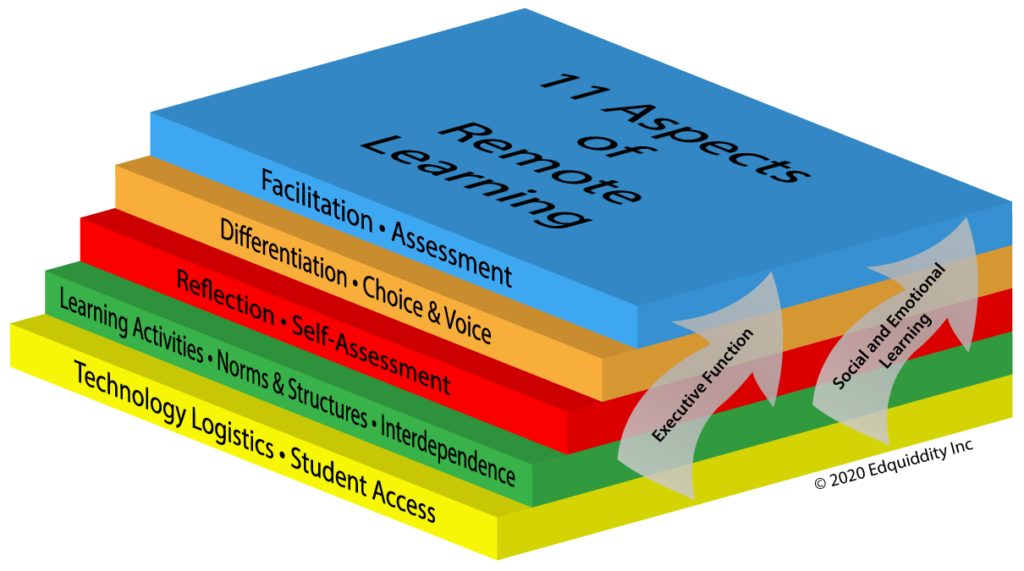
You can download the 11 aspects of remote learning here. As a teacher, your attention will move through five levels, each with one or more aspects that must be addressed in tandem … thus the five levels:
Level 1: Technology Logistics and Student Access Level 2: Learning Activities with Norms & Structures and Interdependence Level 3: Reflection and Self-Assessment Level 4: Differentiation and Student Choice & Voice Level 5: Facilitation and Assessment
Note: These do not represent the order in which you may think these aspects should take place; this is a natural progression of thought and readiness as one moves through this transformation.
Level 1: Technology Logistics. What can you offer students through remote venues? Think about your digital learning platform and other available technology tools. How will you accomplish your “brick ‘n’ mortar” tasks in a virtual way? Create a chart to think through the shift.
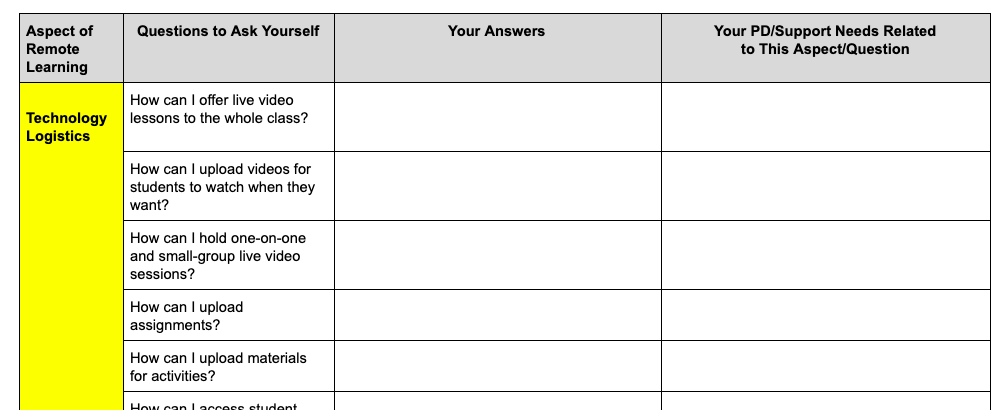
Even if all students have a device and Internet access … Do students have a webcam? Do they have to share one device among siblings? Do they know how to use the technology tools you’ll be using? Your decisions about technology use will have to reflect student access. You might use a digital survey or simply have phone conversations with an adult in each home.
Level 2: At some point, the technology is working and you’ve posted lessons and assignments. Now your brain moves to the next level: the quality of Learning Activities. (Remember, there is a difference between learning activities and practice activities!) What is the standard you are attempting to address? Is the activity you found or created focused enough on the content? While you identify or design learning activities, you have to ask yourself, “Will my students be able to accomplish this on their own without me?” This leads to the need to develop Norms and Structures.
How-to sheets and directions provide step-by-step instructions. Note in the section of a “how-to” sheet below, each action has a number of its own. The action you want the student to take is in bold. The example you are sharing is in a different color. Any words that might confuse some students, like “variable,” are defined. Each step is succinct so the student is not overwhelmed by text. The teacher uses margins and line spacing to offer reasonable white space, thus making it more readable. After you write a “how-to” or direction sheet, read through as if you were the students in your classroom.
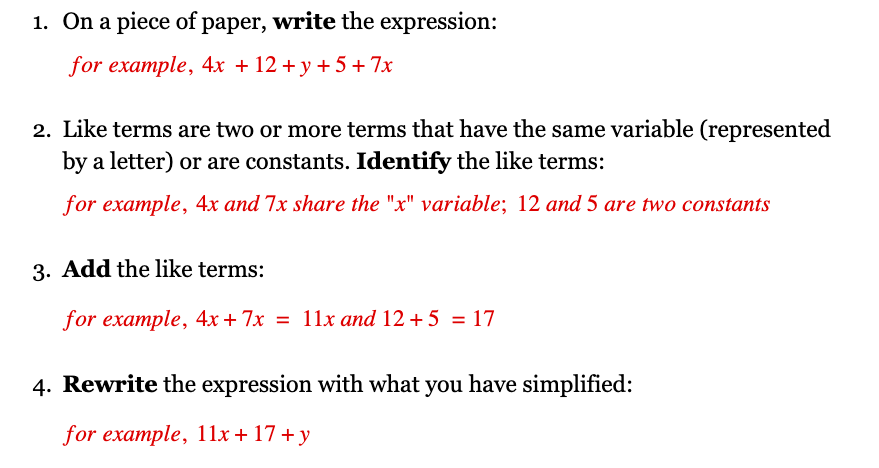
Given you’re not there to jump in and clarify directions, you need to view these through the lens of the remote learner. Would a checklist of short-term accomplishments help the student move through the assignment? What are the norms for receiving help? Give students a pathway, such as: re-read the directions, check the digital resource area, check the digital peer-expert board for someone who could help, put your name on the digital help board, and lastly, ask someone in your home. (After all, you don’t want students just asking parents, caretakers, and siblings for help; you want them to become resourceful.)
While designing learning activities and establishing norms and structures, consider how you will build in communication and interactions. Think through the Interdependence (teacher and student, student and student, and student and family members) you want to establish in your remote learning community. How will you use technology to foster that?
Level 3: Once your activities, lessons, and assignments are running smoothly, consider how you can foster student Reflection and Self-Assessment. How can you use technology to foster and capture students’ reflection on their day, their learning, and their learning habits? How can you foster and capture students’ self-assessment of their mastery of the content? The more you can build in student responsibility for these important aspects of remote learning, the more students will be able to take responsibility for their learning at a deeper level.
For example, that student focus card you used in the classroom can be converted to an online document. Have students set a timer for ten minutes and then start working. When the timer alerts them, they should stop and reflect on how well engaged they are in the work. This helps students reflect on their work habits and productivity.
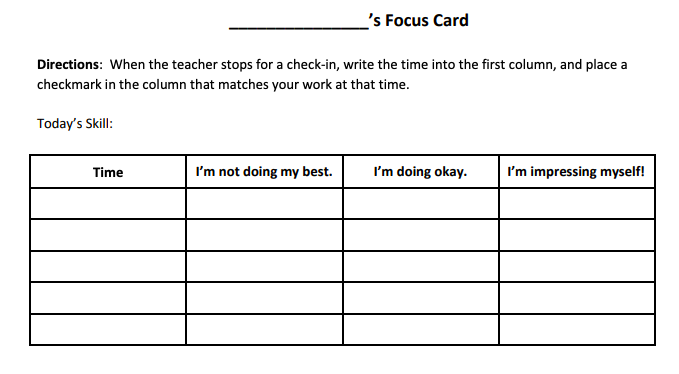
Level 4: Now it’s time to put more attention to differentiating your learning activities. Students who, in the classroom, would need a lot of help might need scaffolded activities: review of prerequisite skills, step-by-step instructions, more definitions, etc. Students who already know the content will bore easily unless you offer an advanced or deeper look, or an interesting challenge for applying that learning. Differentiation is key to keeping your students engaged in meaningful learning.
Relatedly, how can you give students more Choice & Voice? Let them select from various learning activities (as in the case with the “9-Box Grid” (see example of the Food Chain). Let them make suggestions as to activities they find or projects they want to pursue that address the curricular content.
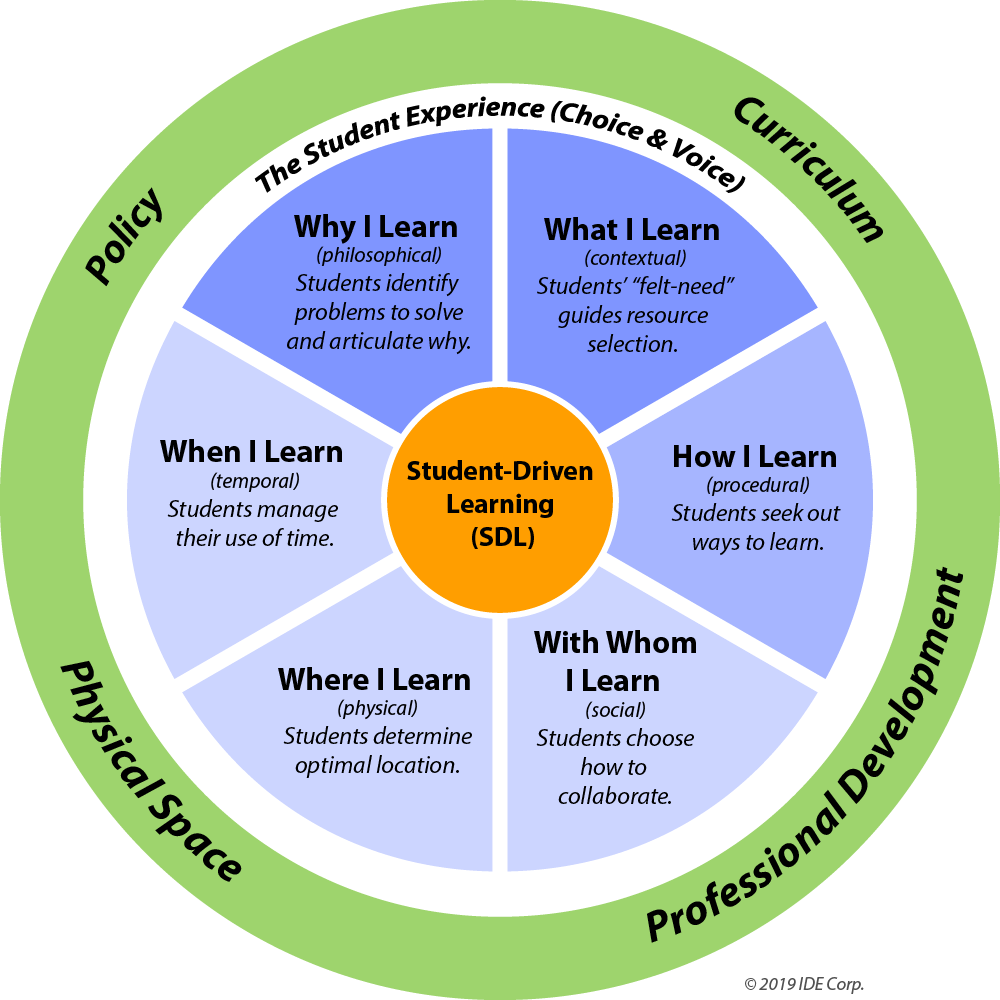
Level 5: As the remote learning environment takes shape, it’s important to realize that your role must extend beyond the design aspect to the implementation aspect. How will you facilitate student learning from afar? Take advantage of cloud-based documents to make comments on student work, including pushing their thinking to the next level with “what if?” questions. Create checklists that allow students to “find” their work performance and virtually “hear” your voice in their heads.
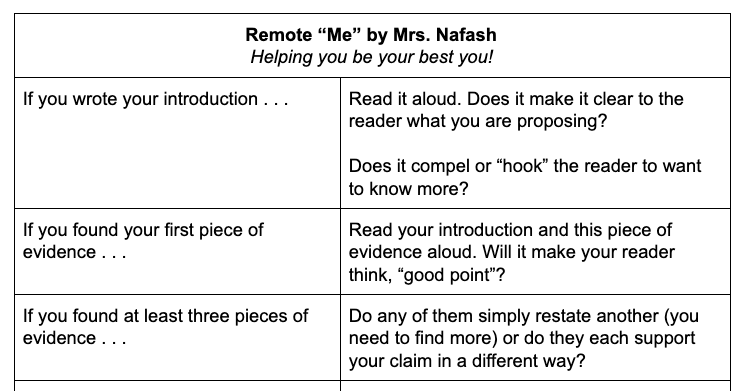
The root word of assessment comes from the Latin assidere, which means “to sit beside.” In a remote learning environment, the teacher must “virtually” sit beside students to determine their level of mastery. How can you use technology to assess student work in progress, to assist and redirect? How will you conduct summative assessment at the end of a unit of study?
These questions and ideas are a start to thinking through the shift from “brick ‘n’ mortar” instruction to designing remote learning environments. I hope they help! You need to address deliberately executive function and SEL through all of these levels; I will leave that for another post. 🙂
Resources:
- – Download the “11 Aspects of Remote Learning”
- – Start thinking about how you can re-imagine school and design hybrid learning environments.
- – Contact us to learn more about how we can support your school or district in designing remote learning environments at solutions@edquiddity.com
